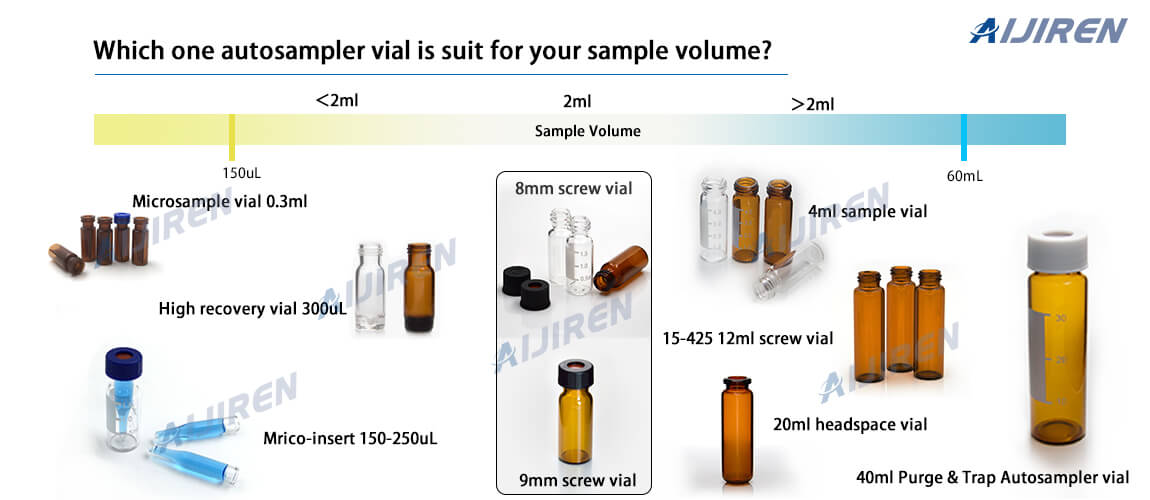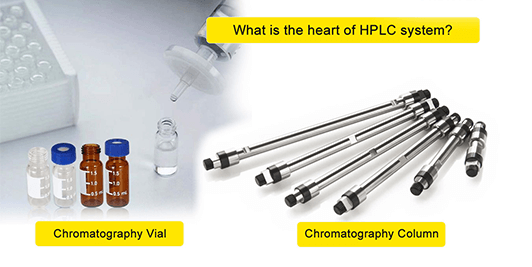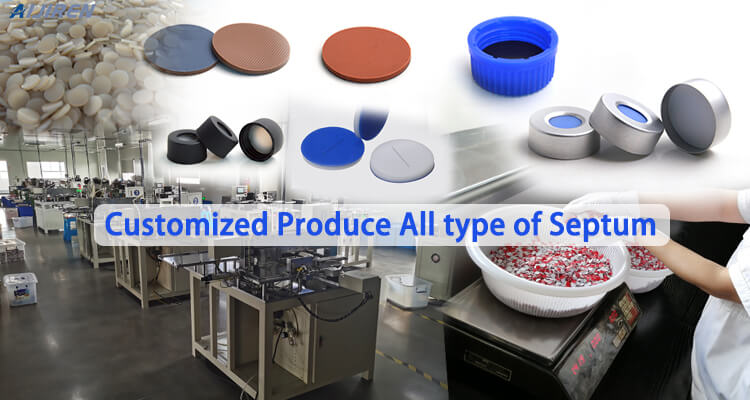When we mention the
HPLC system, chromatography columns and
sample vials are two elements that have to be mentioned.
Chromatography Columns undertake the important task of separation; The sample vials carry the important task of sample carrying. Which is more important, vials or chromatography columns? Please see the answer below.
What is column chromatography?
Column chromatography is an analytical method that is widely used in the chemical and biological fields. When applied to chemistry, column chromatography separates one or sometimes multiple compounds from a mixture dissolved in an appropriate solvent. When applied to biology, laboratory experts use column chromatography to isolate biological compounds, such as nucleic acids (DNA) or proteins, from mixtures. Chromatography columns are responsible for molecular interactions and can separate, identify, and quantify functions such as the components of sample. The two most common examples of stationary phases for column chromatography are silica gel and alumina while organic solvents are regarded as the most common mobile phases.
Type of Column chromatography
➀Adsorption column chromatography – Technique of separation in which compounds to be separated (solute) is retained or adsorbed on the surface of the adsorbent (stationary phase).
➁Partition column chromatography – It is based on the variance in partition coefficient of the individual components of the mixture, where the stationary phase and the mobile phase both are in the liquid state.
➂Gel column chromatography – Here, the separation is carried out through a column packed with gel and possesses a porous stationary phase. It is also referred to as size exclusion chromatography
➃Ion exchange column chromatography – The basis relies on the charge of the molecules. The separation is done when molecules get attracted to the oppositely charged stationary phase.
What is chromatography sample vial?
Chromatography vials are typically used as temporary sample containers for subsequent gas chromatography (GC) or liquid chromatography (LC) analysis. Depending on the use, chromatographic vials can be divided into liquid chromatography vials and gas chromatography vials. In particular, 18mm threaded head-to-head bottles can also be used for SPEM analysis. Standard chromatography vial sizes include 8 x 40mm, 12 x 32mm, and 15 x 45mm. Robotic Arm Machines (R.A.M.) use a non-standard 9mm vial with a magnetic cap. For autosamplers, choose a vial designed for that specific brand. Inserts can be used to decrease the capacity of the vial while maintaining the exterior dimensions. They are useful for smaller samples to ensure the correct amount of sample is aspirated from the vial. Inserts may be flat bottomed, conical (often with a plastic spring at the bottom), or pre-fused into the vial itself (sometimes called a micro vial). Make sure the insert that you choose will fit within the dimensions of the vile you have selected.

Chromatography sample vial manufacturer
Aijiren is one of the largest chromatography sample vial manufacturer and supplier since 2007. Which can supply all standard chromatography sample vial in wholesale price. At the same time, Aijiren can supply all types of septa, such as PTFE septa, Silicone septa, pre-slit septa, GC septa, Dopak reagent bottle TCB septum. OEM and customized septa are available.
The quality of the sample vials and cap septa determines whether ghost peaks will appear in the experimental results; The chromatography column is an important part of analyzing the results of the experiment. In summary, both columns and vials are critical in chromatography systems. Among them, the chromatography column is the heart of the chromatographic system.


